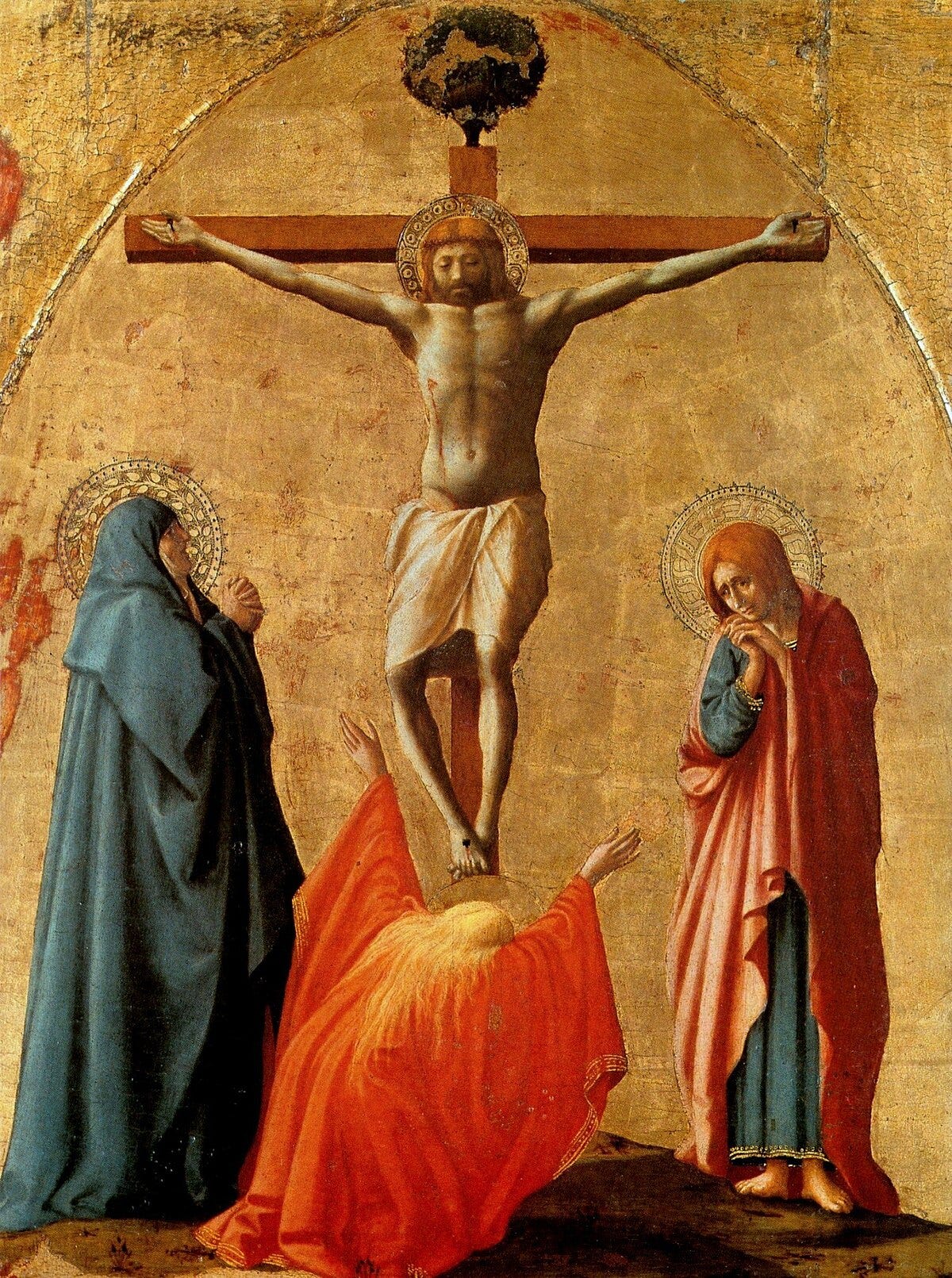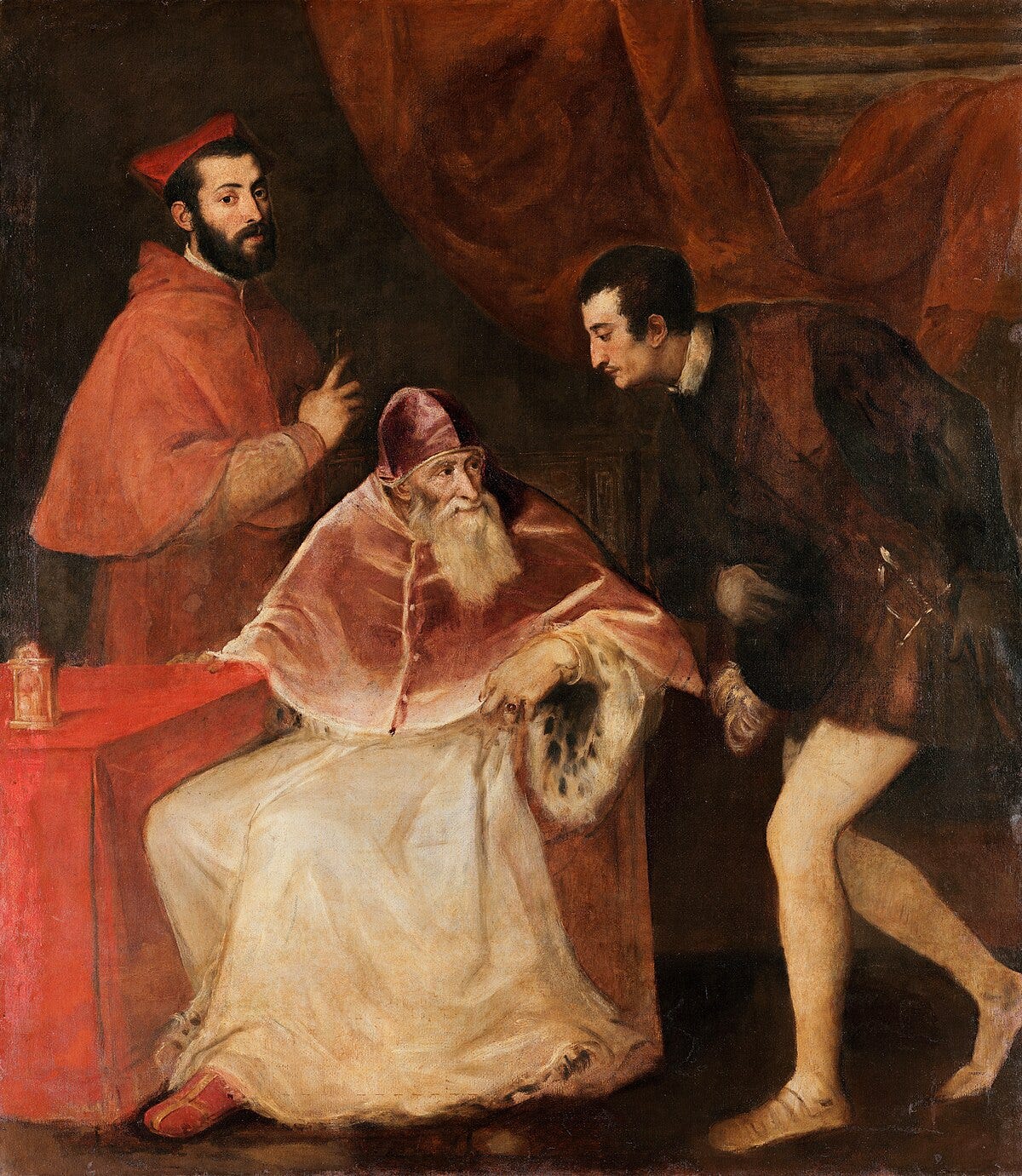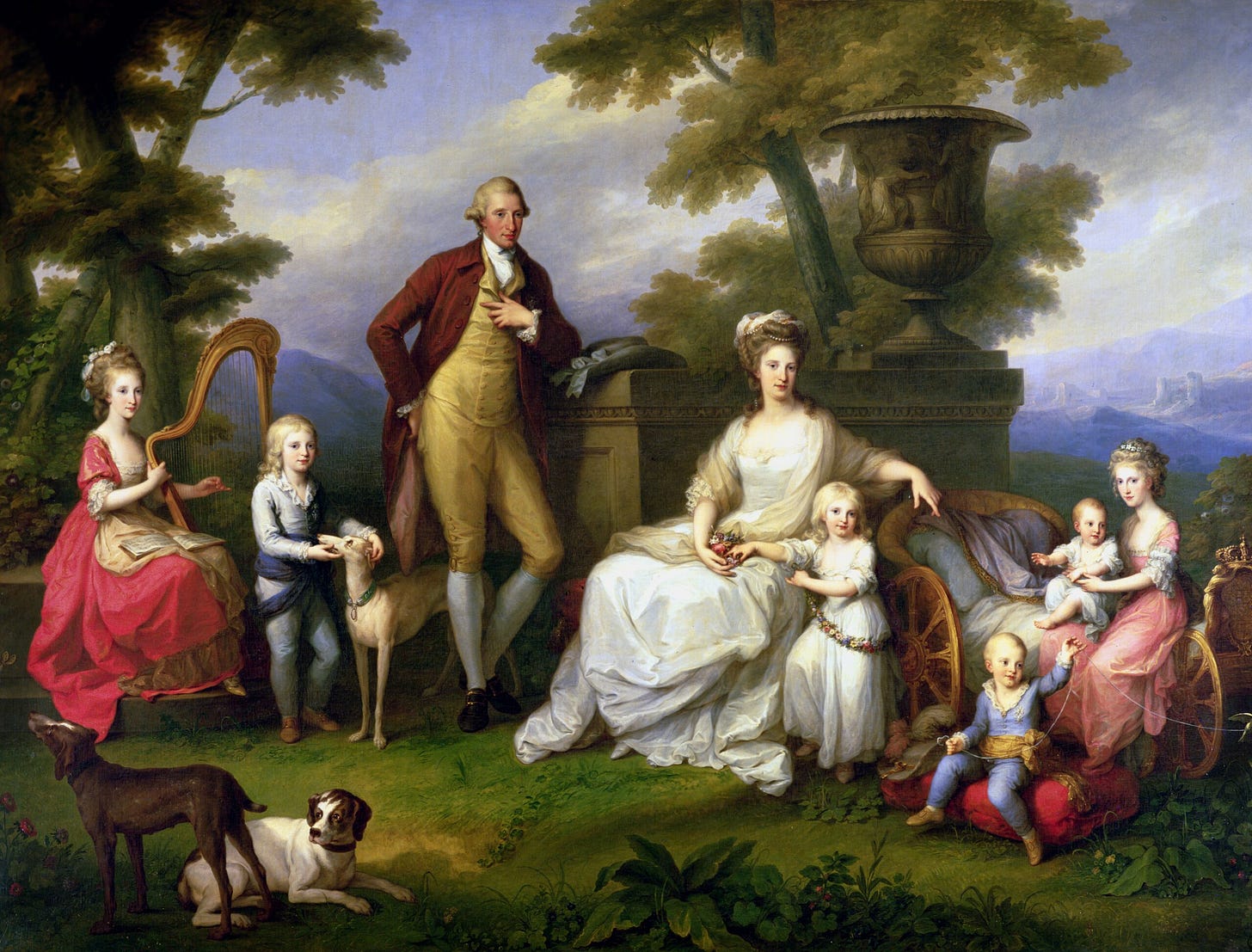Five of the Best - Museo e Real Bosco di Capodimonte, Naples
Scheming Popes, drama and fate in this most perfect of Italian galleries
I came across this wonderful museum almost by accident. We were visiting Naples en route to Vesuvius, Pompeii and Capri, and I had a spare day in the city. I remember being more overwhelmed here than by anything I saw in the dusty streets of Pompeii.
The Museo e Real Bosco di Capodimonte on a typical Naples day
This is a quite astonishing collection, started off by Charles VII of Naples and Sicily in 1738, who was going to build a hunting lodge on the Capodimonte hill in the city, but then turned it into a palace instead, as you do. In fairness, he had to find somewhere to put the colossal Farnese Collection of art he had inherited from his mother Elisabetta Farnese. The collection has been augmented, filleted and generally messed around with over the years. It now stands as a remarkable array, particularly of Italian art, with some astonishing treasures. Furthermore, you will be amazed by the lack of crowds for a gallery so prestigious. Take your time to get out of the heat and go up the hill. Take the bus. Here are my Five of the Best, which will help you to get the most out of this sumptuous collection.
1. Crucifixion (1426), Masaccio
An astonishing work by the Early Renaissance master who is widely credited with starting the whole movement off in Florence, and a must-see for anyone remotely interested in his work.
It is a panel painting, a reasonably unusual thing for Masaccio, and it was painted to sit on the top of his Pisa altarpiece, a huge work done for the church of the Carmine in the Tuscan port. It was designed to go above a large Madonna and Child, which features an extremely solid Christ Child eating grapes, and which is now in London’s National Gallery.
So, we are looking at a work designed to be gazed up at, hence the rather strange foreshortening of Christ. That is impressive, for a painting achieved in the early 15th century, but it is the figure of the Magdalen which is so remarkable, modern, minimal and astonishing. While John the Evangelist looks slightly Gothic, and old fashioned, Mary Magdalen reveals an entirely different approach. Look at the solidity of her body, and the way her drapery shows the dynamism of the movement underneath it, and how her hair tumbles down her back. This figure has no precedent in Italian religious art.
2. Danae, (1545), Titian
A century later, and we have left the Bible to focus on sex, nudity and Classical mythology. This painting deals with the slightly problematic (in modern terms) story of the princess Danae, who was forcibly isolated in a tower after a prophecy indicated that her firstborn would kill her father Acrisius. Unfortunately, Zeus was having none of this, and even though she had been locked away, he managed to get in anyway and seduce her via the handy guise of turning into a shower of golden coins. Titian and his workshop did at least six versions of this picture, but this was the first and (I think) the most powerful. You can almost see the hesitation and then capitulation running through Danae’s mind. The single naked woman on a bed running across the painting is a pose which Titian does again and again, and has of course been hugely influential, with artists from Velazquez to Manet, Picasso and Tracy Emin using it as inspiration. Incidentally Perseus, the offspring of this mythical encounter did end up accidentally killing his grandfather Acrisius. Never wrong, these classical prophesies.
3. Pope Paul III and his Grandsons (1546), Titian
I don’t usually have two Five of the Bests by the same artist but this masterpiece of perception and understanding by Titian is unmissable. It could be a scene from Succession, frankly, with Logan Roy in the papal throne.
Pope Paul III is in his late seventies; his grandsons (clearly no truck with Catholic celibacy here) Ottavio and Alessandro Farnese are paying homage to the old man. Ottavio is ostentatiously kneeling; Alessandro, in a cardinal’s robes, stands behind him. The old, watchful pope did not live to see his legacy flourish; most of his powers were removed by Charles VII and he died leaving the papacy in a weakened state. But look how tightly he grips his chair.
4. The Flagellation (1607), Caravaggio
Just look what a difference 50 years makes. Everything about this picture, by the Mannerist master, is utterly different from what went before. The ultra-dramatic lighting scheme, the tormented poses, the high colour. It’s not at all surprising that today Caravaggio makes such a great subject for cinema since his paintings, although static in reality, are bursting with cinematic dynamism.
It’s a truly nasty piece. Christ is collapsing not from fatigue or despair, but because his knee is being kicked away by one of his tormenters. The one on the other side is yanking at his hair. It has been called a “sadistic ballet” which I think is pretty accurate. This was one of the works which Caravaggio did when he arrived in Naples, and turned him into an artistic sensation.
5. Ferdinando IV and his Family (1783), Angelica Kauffman
Kauffman today is revered as one of two female painters who were among the founding members of the Royal Academy in London. A Swiss painter, her career was made in London and Rome, but she was feted across Europe for her artistic prowess and charm. Mostly acknowledged as a history painter of famous classical mythological scenes, Kauffman also brought her neoclassical style to commissioned portraits, as you can see here from this group portrait of Ferdinando, son of Charles VII and his family.
They sit surrounded by classical references; the large urn, the chariot, harp and drapery all hail to a Roman ideal. That this is a benign and content family is underscored by the beautiful blue sky and fluffy white clouds.
No storms threaten Ferdinando and his family. The fact that his reign was marked by struggles in trying to unite the kingdoms of Sicily and Naples is simply not relevant in this charming portrait of a ruler and his heirs.
Thanks so much for subscribing to The Arts Stack! You are an absolute legend and your support encourages me to continue with the whole project. See you this Thursday for my next post, and on Monday week for another Five of the Best. Here’s a recap of an earlier Italian museum that you might like. With yet another Titian nude.
Five of the Best in the Uffizi
The Uffizi was built in 1560 originally as offices for the Medici, the banking family who ran Florence and who had a huge amount of administration to put under one roof. Eventually it held the family’s art collection. These days it’s the most visited gallery in Italy, which is saying something. The Medici was among the first group of high wealth individ…











